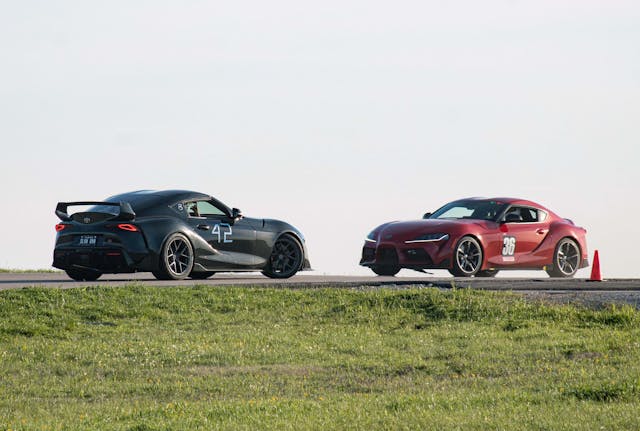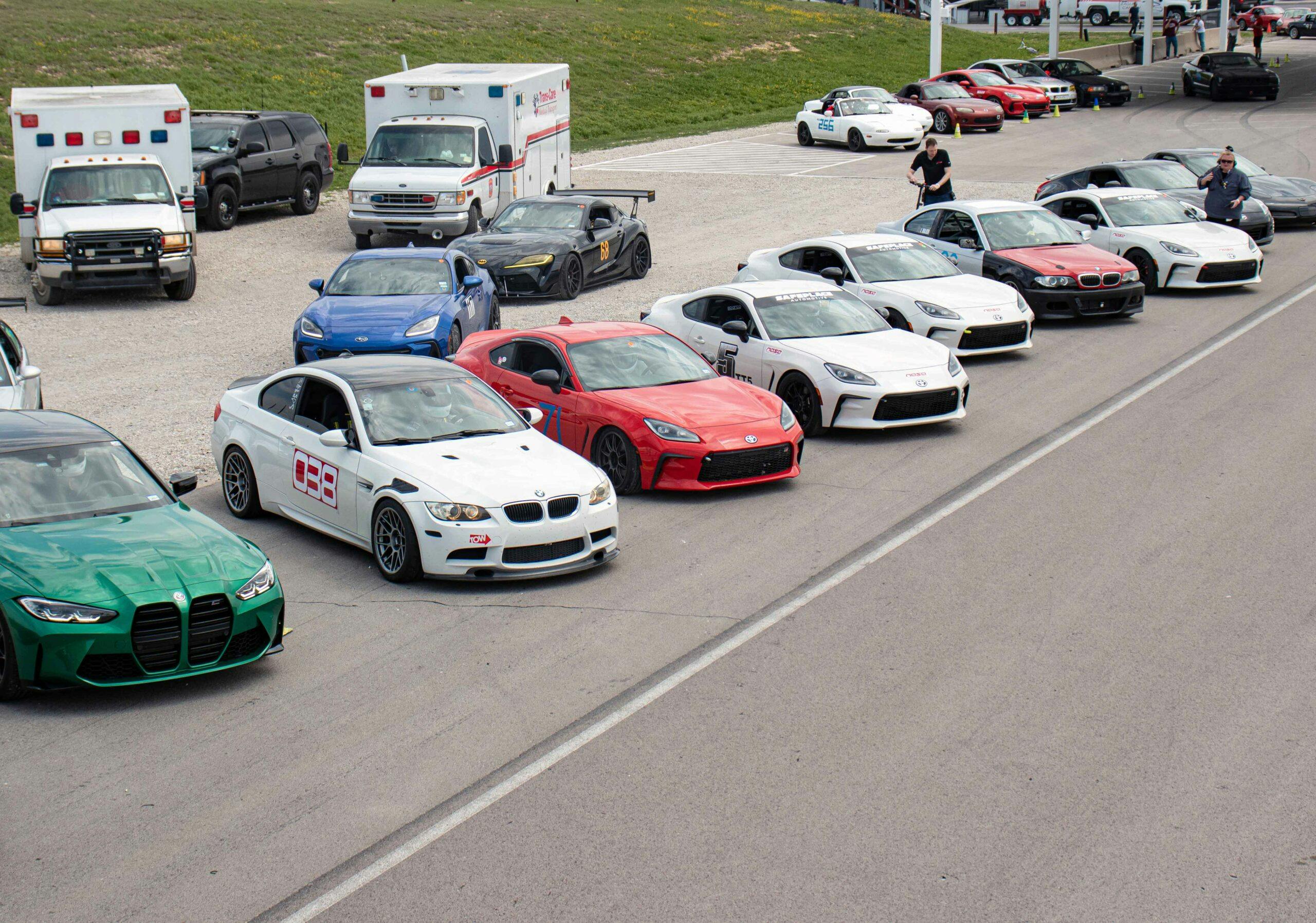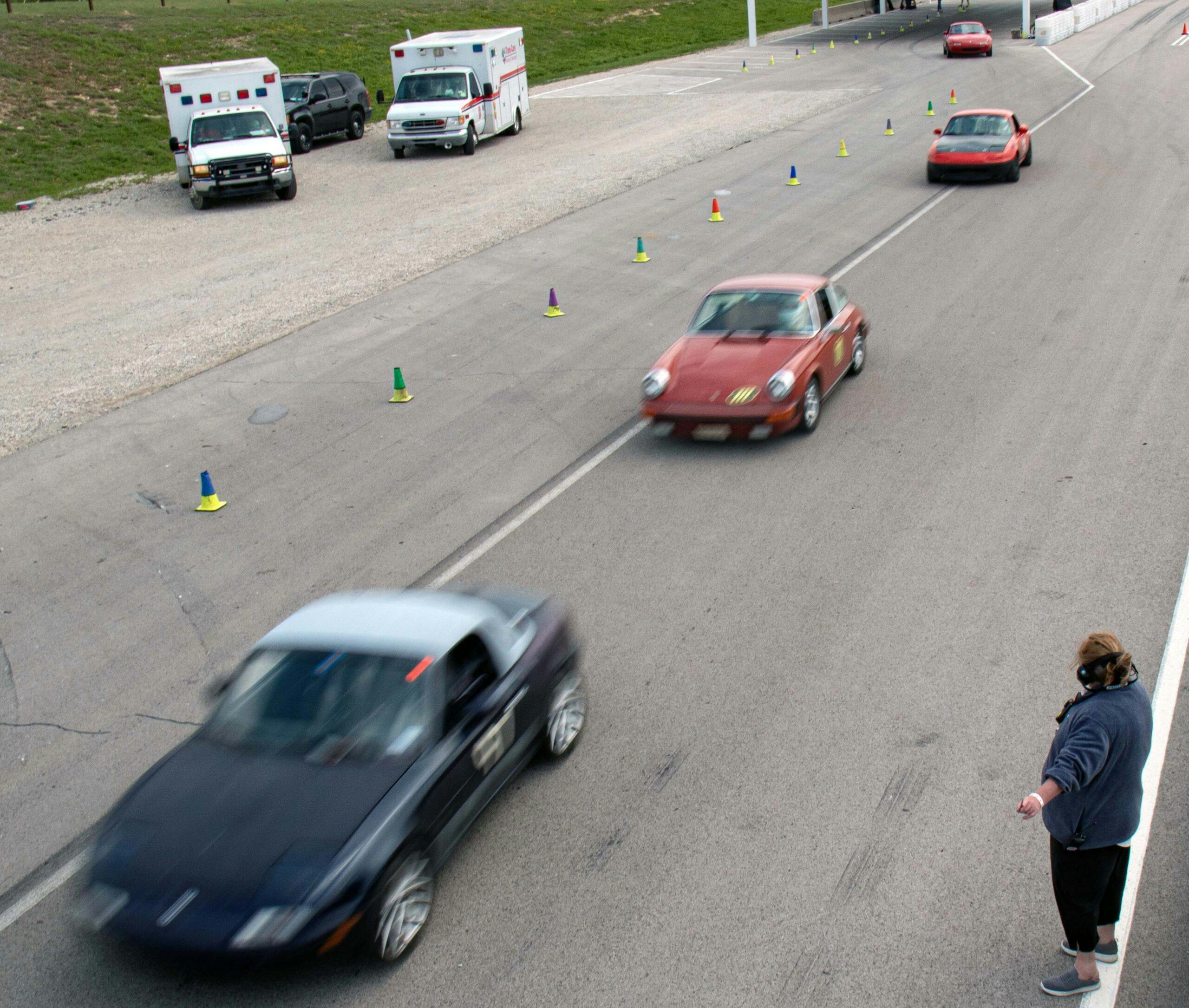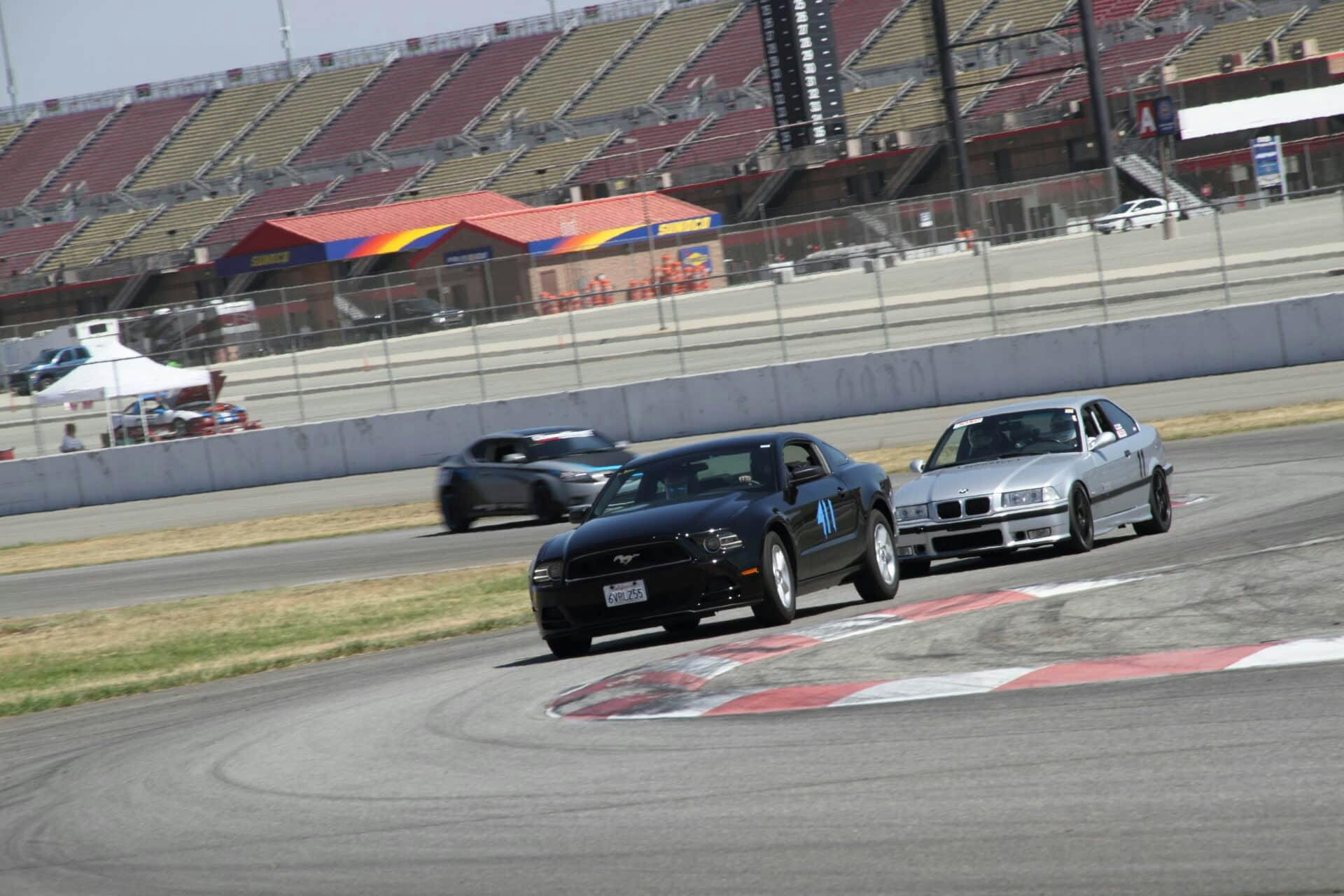Media | Articles
Want to become a better driver? Try HPDE training
For many of us who truly love getting behind the wheel, learning is not something that ends after your license exam.
What if you want to learn how to extract more performance from your vehicle? Or feel more confident on the road should you need to perform sudden safety maneuvers? Training up will likely require going faster than is allowed on public roads.
It doesn’t matter if you drive a slushbox commuter sedan or a manual-transmission Corvette; all cars are more capable at the hands of someone who studied and practiced to become a better driver. But if you want to become a high-performance driver, how do you improve?
There’s a path to driving advancement, and it starts by attending a High Performance Driving Event (HPDE).
Before we get into the nitty gritty, let’s cover a bit of behavioral science. The Zone of Proximal Development maps out what you are capable of learning, and it applies when you’re behind the wheel. Unless you have hours of track time, you’re guaranteed to feel a range of on-track emotions that will test your limits.
Marketplace
Buy and sell classics with confidence

Consider the Learning Zone Model: Odds are that you’ve left the “Learning Zone” after earning your state driver’s license. Now you are likely to enter the “Comfort Zone.” Picture yourself commuting around town. Life is good.
You might want to learn more, though, especially if you’ve upgraded to a more advanced vehicle since your driver’s test. What happens when you push the performance envelope without the requisite training? Welcome to the “Panic Zone,” a place that’s even worse to find yourself on public roads. Regularly experiencing panic on public roads is the wrong way to elevate your driving experience.
HPDE provide a handy, safe environment to traverse the Learning Zone Model, helping drivers of all skill levels. These events are learning opportunities for all, with instructors trained to help you. The National Auto Sport Association (NASA) offers HPDE events across the country, and will likely be your easiest, most affordable on-ramp to a high performance driving school.
The events are usually two-day instructional events that only require NASA membership (by the way, Hagerty Drivers Club members get a complimentary membership for one year), just about any car that passes a state inspection, and a helmet (which can often be borrowed/rented on the track premises). With this in mind, NASA may have the best value for any entry-level enthusiast looking to experience motorsports from behind the wheel.
I recently participated in a NASA HPDE event at Eagles Canyon Raceway outside of Dallas, Texas, where I got the full experience as an entry-level performance driver. This wasn’t my first time on track, but my hope intent was to provide insight to others who might be interested in such an event and want to know what to expect.
Unlike other how-to articles for HPDE instruction, I’ll focus on the Learning Zone Model, as I experienced all three of the aforementioned zones over the race weekend. All three zones manifested themselves distinctly on track, and it’s my goal to prep you for them.
Wait, we’re getting ahead of ourselves. An HPDE weekend involves plenty of on- and off-track education, starting with classroom instruction about the basics of both your car and track etiquette. Since HPDEs are broken down to allow multiple classes of drivers to participate on the same track, you should attend to the participant schedule. Know where and when you need to be, including the time and location of where you need to get your vehicle inspected. The latter is quite easy, as most of the inspection process can be done online.
One of your first experiences will be in the classroom, and there are no dumb questions. What you learn is either unique to performance driving or seemingly counterintuitive (like when you learned to steer into a skid in driver’s education). One counterintuitive example is the notion that an HPDE is not a race, even if you are on a race track. So be neither nervous nor aggressively hyped for the track experience you’re about to behold. Just be ready to learn. That’s why you’re here.

HPDE classroom instruction even covers the basics of being on a race track, like wearing wristbands and your pit in/out locations. There are on-track personnel doing race specific tasks, but that’s mostly for your safety, and the safety of others. You will be paired up with an instructor, usually a NASA member with a lot of on-track experience and a student-oriented demeanor. Here are a few more items you’ll learn in the classroom:
- Pointbys
- Blend lines
- Never get out of your car unless it’s on fire!
- Colors of Flags
- Basics of taking a corner
Classroom instruction only goes so far. NASA knows this, so you are introduced to the track with your instructor in the passenger seat. I did three of these track runs behind the wheel of a 2023 Toyota GR Supra. The brand-new 382-horsepower coupe was provided by Toyota for the sake of this piece and had admittedly more performance than my limited experience could handle. Well, at least prior to taking the course.
In the paddock, I cinched my helmet, hopped into the GR Supra, and adjusted my seat and mirrors. While my first on-track venture started out fine, I wasn’t prepared for the track, and I was distracted by more-experienced drivers filling up my rear-view mirror. Within minutes I went into the Panic Zone, as I was overwhelmed with the track’s complexity, and everything snowballed from there. I was doing things I don’t even consider on public roads, like tapping on the brakes before a turn, which gave me a false sense of security. I was never in any danger, but my focus on the things that didn’t matter distracted me from learning.
It was quite frustrating. I realized just how quickly I went from the Comfort Zone to the Panic Zone. My instructor calmly explained what I should be doing on the track, but my panicking ensured I couldn’t recover in time. I couldn’t get back to where things were before the snowball of mistakes occurred.
After my first session, we took a long time to chat and debrief. This is where my instructor was absolutely priceless in my growth, as he made the racing lines on the track map turn into memorable actions for my next run. Sure enough, the second run was smoother, and I was able to learn more about the track … and the GR Supra.

Here’s where I make a suggestion for everyone: Whether you have an instructor riding shotgun or you’re driving solo, take a beat and assess what you initially did wrong and make that your initial fix before going out the next time. I was too hard on myself during the first session. I didn’t need to memorize each curve, each apex, and the correlation between some curves and their subsequent partners (like how sometimes the first turn is a throwaway, setting you up for a better line into the next turn). That’s why we have multiple sessions.
I even learned that, while I was fairly smooth, I wasn’t turning the wheel fast enough in some corners to maximize my speed in specific places on the track. That moment was a literal jaw-dropper for me, but luckily the racing helmet masked my shock.

That third and final run of the day was a success. Once I started nailing down the errors I previously made in the corners, my confidence was boosted. The coupe’s insane acceleration and braking was less of a crutch to fast lap times, and more of a willing partner to ramp up my progress. I never got in the Panic Zone. Instead I hit the Learning Zone. And I hit it hard: My instructor was excited at my progress and it was all starting to make sense. His instruction made me faster. Heck, I was even doing full ABS braking in a straight line, something I never had the nerve to do before. Ever!

I paid attention to which corners are throwaways, setting me up for a superb corner exit. I squeezed the throttle and felt a soft pull to the back of the seat. I had cleared a personal hurdle that’s dogged me for decades. I spoke of this progress to NASA Texas’ Director of HPDE, Andy Pettit. The series of thoughts turned into a smattering of questions.
SM: What should someone know before attending an HPDE?
AP: Probably the most important thing to consider is that you should not modify your car before the event. (This applies more to newer vehicles without significant wear items.) Just ensure you have fresh fluids (oil, brake, etc.) and fresh tires, as the car is otherwise far more capable than it appears on public roads. Beyond that, just know that NASA HPDE events exists across the country, and that they are for everyone’s benefit. So spread the word!
SM: What should you keep in mind during off-track instruction?
AP: Since NASA now does a fair bit of instruction on pre-recorded Zoom meetings (available on YouTube) take your time to learn things like flag colors, the vocabulary of the trade (grid, paddock, blend line, etc.) and the layout of the track. You are going to figure out just how different track driving is compared to the street, even compared with emergency maneuvers, so it’s best to get the basics sorted out before you put on your helmet.
SM: How about on-track?
AP: Please come with an open mind! You will quickly learn that the race track is far different than public streets, and the differences will change your expectations of both the limitations of car and driver.
SM: How do you manage stress with all the potential stressors on track?
AP: Never forget that NASA HPDEs are designed with safety in mind, and contact between cars is exceptionally rare. Our NASA region has had zero contact between participants in three years, so this is a controlled environment where you focus on driving skill advancement. While you may be on the track with more experienced drivers, you are doing drills with breathing room, so nobody will be messing with you. This is not a race, this is an educational experience!
An educational experience, indeed. I look forward to my next HPDE event. Luckily for me, NASA has an HPDE2 event to help reinforce what I learned on the first date. Stay tuned …
***
Check out the Hagerty Media homepage so you don’t miss a single story, or better yet, bookmark it. To get our best stories delivered right to your inbox, subscribe to our newsletters.























HPDE’s for me have been the most fun I have had on a track. It’s not a race and it’s very safe.
I absolutely enjoy HPDE sessions, including SCCA’s Track Night In America. I just wish it was easier to make time for the events with my busy schedule. Every year, I say that I am going to do more events and it never seems to happen. 🙁